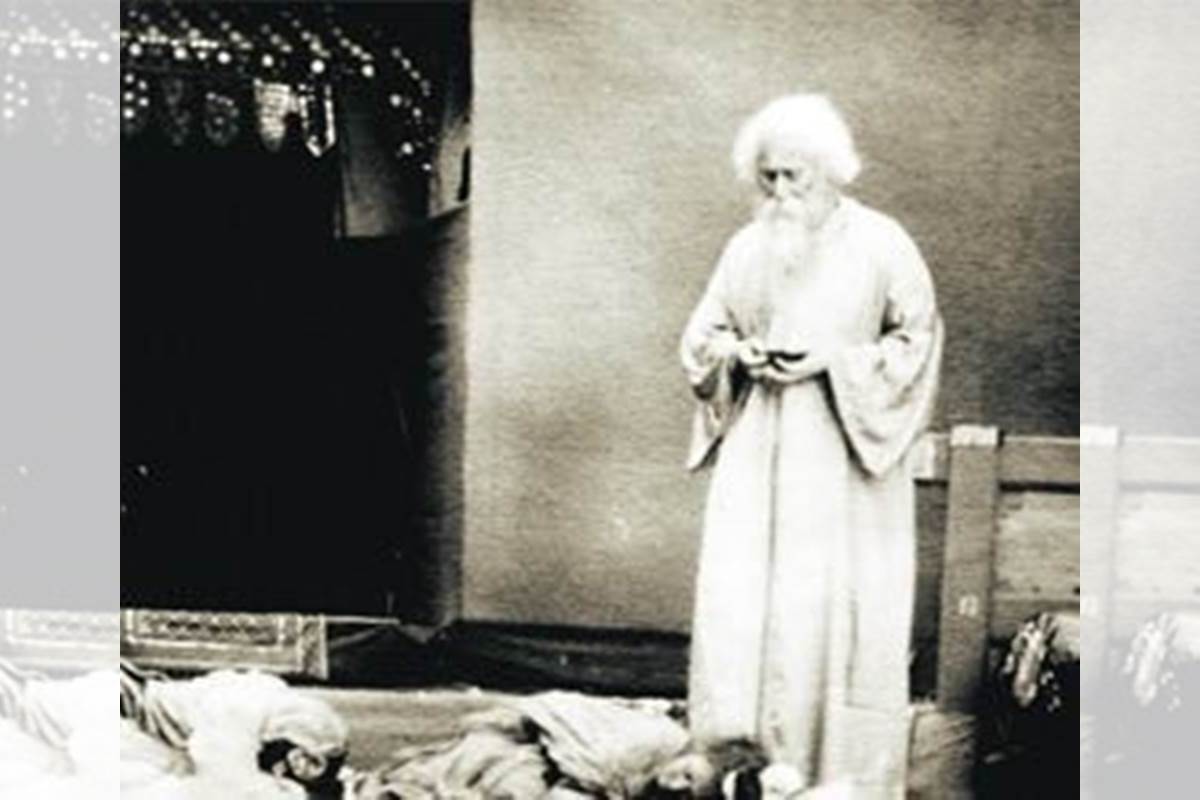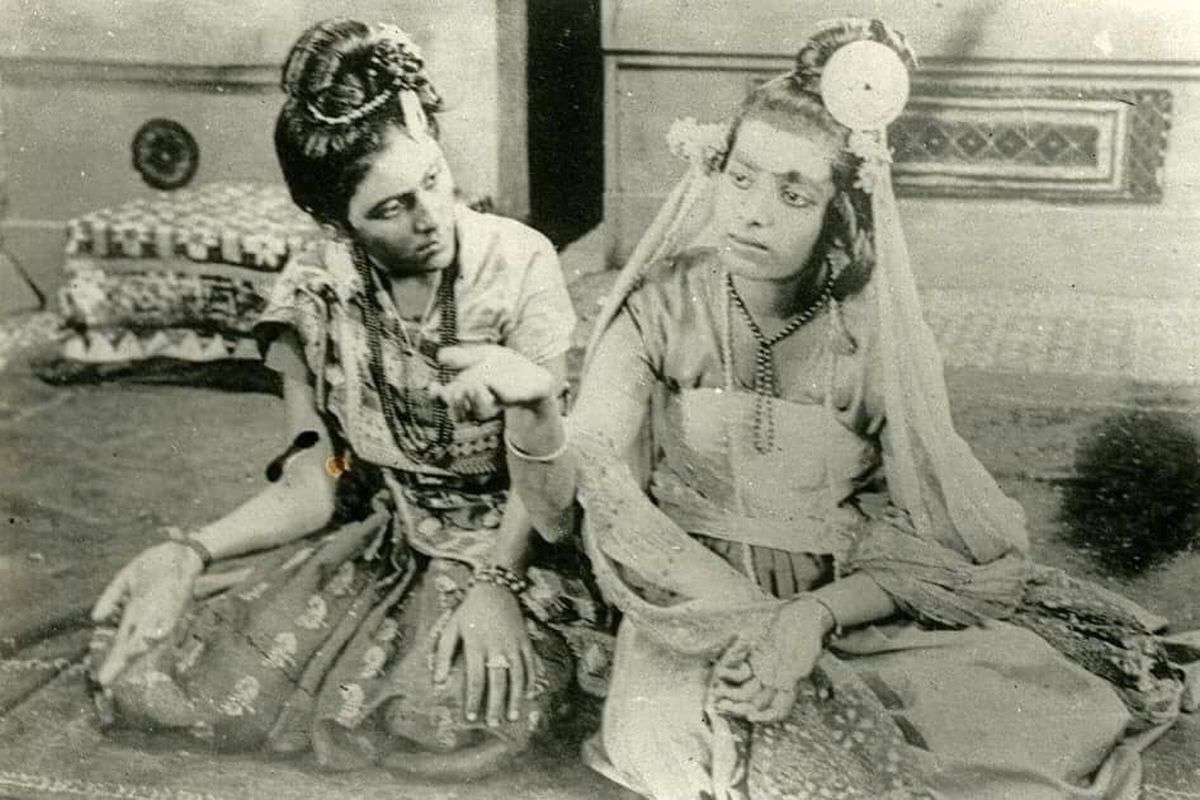BJP govt at Centre can topple at any time: Akhilesh Yadav
Samajwadi Party president and MP Akhikesh Yadav said the BJP government at the Centre can topple at any moment.
Natir Puja was the only film Rabindranath Tagore directed. Based on his poem, Pujarini, it marked quite a number of firsts from putting a marginalised woman in the centre of the narrative to the unconventional shooting technique

Rabindranath Tagore in Natir Puja.
Not many outside West Bengal know that Rabindranath Tagore directed a film based on Natir Puja, a dramatised version of his long poem, Pujarini. This was an all-woman play he wrote on the request of his daughter-in-law, Pratima Devi, who wished to perform it on the poet’s 70th birthday.
Natir Puja’s dramatised version was first staged at Jorsanko Thakurbari in Kolkata in 1927. It was again staged at New Empire, Kolkata in celebration of the poet’s 70th birthday. An impressed BN Sircar, founder-proprietor of New Theatres, invited Tagore to direct a film version under the New Theatres banner. The New Theatres Studio played host to Tagore in 1931. The studio was flooded with crowds who had assembled to catch a glimpse of the great poet.
Tagore directed the film, shot on NT Studio’s Floor Number One. He also played a role and assembled his acting cast from Shantiniketan. Nitin Bose was the cinematographer while Subodh Mitra edited it. The film was shot within four days.
Advertisement
Breaking the conventional rules of cinema, Natir Puja was filmed like a stage play. After editing, the footage was 10,577 feet! It was released at Chitra Talkies on 14 March 1932. Sadly, the prints of the film were reportedly destroyed in a fire at the New Theatres.
It is an important chapter in Indian cinema, as it is the only time when Tagore — a writer, poet, musician and painter — interacted directly with cinema. The screenplay was written under his guidance by nephew Dinendranath Tagore and students of Santiniketan acted in it. The film was a simple and straightforward recording of the play that may remind some of Sir Laurence Olivier’s film version of Three Sisters years later. Natir Puja is the 2,500 year old story of a nati(danseuse) who sacrifices herself for her devotion to Lord Buddha. Tagore based the play on a legend in the Pali sacred book, Avadhan Shatak.
READ | Rabindranath Tagore and his influence on silent cinema
Because of Tagore’s presence in the film, it was expected that it would be well received by viewers. The producers of the film agreed to donate 50 per cent of the film’s proceeds into Tagore’s Shantiniketan project. But Natir Puja was a commercial failure and the staginess of the film was blamed for the same.
A documentary film in 2011 tried to salvage some clips from the film, which were recorded scenes from the original play staged at New Empire and created a beautiful music track with songs voiced by Hemanta Mukhopadhyay and Suchitra Mitra and a commentary in English mainly focussed on the making of Natir Puja. Bengal Studio of Uttarpara, a Kolkata suburb, had organised an exhibition of photographs and the salvaged copy of the original manuscript as a tribute to the film. The exhibition, conceived, curated and organised by archivist Arindam Saha Sardar was inaugurated on 11 June 2011 in celebration of the 80th anniversary of the film. The celebrities who did the honours were Tagore historian Rudraprasad Chakraborty; danseuse, choreographer and academic Amita Dutta; national award-winning Tagore archivist and curator Arun Kumar Roy and Sushobhan Adhikari.
The film’s protagonist Sreemati was a court dancer in the palace of King Ajatsatru, the son of King Bimbisara of Magadha. Although King Bimbisara was a devotee of Lord Buddha, King Ajatasatru took all measures to stop the spread of Buddhism during his reign.
During an autumn evening, Sreemati gets ready for the arati and goes to other women of the palace. Despite warnings from everybody that King Ajatsatru has given orders not to pray to the Lord, she continues with her evening prayer. As the palace-temple bells chime, Sreemati makes the highest sacrifice as she is killed while still offering prayers.

New Theatres is also noted for its “Gol Ghar”, which has a history of its own.
The story goes that Sircar built it overnight when Tagore was expected to come to the studios for the shooting of Natir Puja. He knew that Tagore would find the studio floors too hot, so he created a cool corner for the poet laureate, which later became his own little island of sunshine. “Gol Ghar” has played host to some of the greatest figures in Indian history — Netaji Subhash Chandra Bose, Pandit Jawaharlal Nehru, Sarvapalli Radhakrishnan, Sarat Chandra Chattopadhyay, Shyamaprasad Mukherjee and Sarat Chandra Chattopadhyay. From international cinema, personalities like Frank Capra, Jean Renoir and Vsevolod Pudovkin graced the studio with their presence. Sircar also constructed a theatre called Chitra (later called Mitra that recently downed its shutters) as an outlet for films produced by New Theatres.
The documentary on Natir Puja is available on YouTube. The pictures are grainy and not clear at all. If cineastes were to evaluate the film critically, it would turn out to be labelled as rather amateurish in style and treatment. At the same time, one needs to remember that the film was shot in 1931 and Tagore was neither trained nor aware of the technique cinema demanded, so decided to film it as a play and not as film. But one must concede that Natir Puja has tremendous archival and historical value.
The story also has sociological value because it places a court dancer as the subject and uses Nati in the title. This centralisation of a marginalised woman was unique and we witnessed it in other words of Tagore like Chandalika, centered on an untouchable girl from the Chandal caste whose life changes when she comes briefly in contact with Lord Buddha’s disciple, Ananda.
The metamorphosis of a court dancer from a woman of entertainment to a woman of spiritual dedication was extremely radical when Tagore made Natir Puja. Has our perspective changed today?
Advertisement